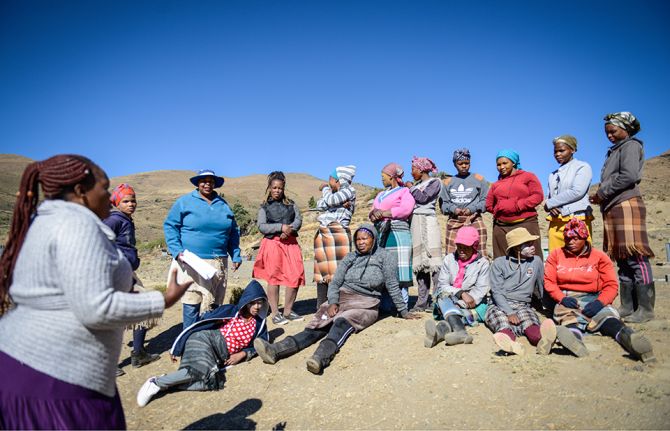




Feature Story
Breaking out of our echo chambers: cutting through the noise with creative storytelling about HIV
24 July 2018
24 July 2018 24 July 2018Analysis of social media use shows that, on the whole, most users tend to engage most with information that aligns to their existing beliefs and perceptions on the world. This phenomenon has been described as the echo chamber effect, whereby users find themselves surrounded, in general, by content from like-minded people and preferred information sources.
Echo chambers can be an opportunity as well as a barrier in the response to HIV. Some online communities offer spaces for people to access and share HIV-related information and resources in a stigma-free manner. On the other hand, echo chambers can also enhance stigmatization, promote discriminatory behaviours or spread inaccurate or false information. To some extent, the echo chamber effect can limit the ability of individuals or organizations to reach people outside of their natural audience bases.
UNAIDS and ViiV Healthcare chaired a symposium on breaking out of such echo chambers at the International AIDS Conference, being held from 23 to 27 July in Amsterdam, Netherlands. The panellists discussed various ways of being heard in a cluttered digital and non-digital space that has radically changed in the past decades.
Science magazine reporter Jon Cohen explained how he uses print, radio, television and Twitter to keep up with the onslaught of news. Despite the non-stop nature of his job, he stressed the importance of quality journalism.
“A medium is a medium and sadly a lot of people do not use the vehicle they have to tell stories well,” he said, likening it to a doctor not using his sharpest tool during an operation. In his opinion, it’s easy to lose readers and viewers, so he advised people to engage as much as possible with their audience and avoid preaching to people.
“Even if I offend people, I describe the reality, because I want you to see it and feel it,” he said.
Georgia Arnold, the Executive Director of the MTV Staying Alive Foundation, explained that the HIV television drama Shuga had had such a successful run for the past nine years because the show focused on teens and spoke to them at their level. It depicts relatable characters that deal with real issues and there is constant youth-based feedback. Recently, MTV introduced a gay character, which she said demanded some adjustment because some countries outlaw homosexuality.
“Use technology to transcend boundaries,” she said, explaining how MTV had to air two versions of the show but uploaded the gay version to YouTube and followed up on Twitter and Instagram. “Flex boundaries, do not smash them,” she advised.
J.P. Mokgethi-Heath couldn’t agree more. He is a policy adviser on HIV and theology for the Church of Sweden and uses his pulpit and sacred texts to reach his audience. “I help people understand texts in a different way,” he said. For him, his style of storytelling in person leads to an immediate response, so he aims to always stay true to his beliefs.
Immediacy and immersion drove Rowan Pybus and Sydelle Willow-Smith to try their hand at virtual reality video-making. The founders of Makhulu Productions based their 3-D short films on young South Africans’ experiences and highlighted one adolescent girl’s journey with HIV, making viewers feel like they are walking into a clinic for an HIV test.
“Virtual reality can have a physical effect on people, and that is a very exciting space to be in,” Mr Pybus said. Ms Willow-Smith added that the fact that Google, UNAIDS, the Desmond Tutu HIV Foundation and the Children’s Radio Foundation all partnered to make the films possible reflects how there is real interest to “break out of individual echo chambers.”
UNAIDS Communications Director Mahesh Mahalingam said that World AIDS Day provides a great opportunity to reach out to people about HIV. Last year, he said, UNAIDS wanted to communicate in a fresh way. The team produced a magazine-like report on the right to health in general, going beyond issues related to HIV. Various communities weighed-in in a series of questions and answers on what the right to health means to them.
“People got to say what they wanted through the UNAIDS mouthpiece, allowing us to break barriers and reach new audiences,” he said.
The symposium ended with ViiV Healthcare and UNAIDS announcing a new digital storytelling challenge prize. “If you feel you engage hard-to-reach groups on issues related to HIV prevention, testing, care and/or stigma, then apply,” said ViiV Healthcare Positive Action’s Jennifer Carpenter. She also recognized the two winners of the Every Footstep Counts video competition, Rogers Simiyu from the Elisabeth Glaser Pediatric AIDS Foundation and Joseph Baguma of THETA-Uganda.



